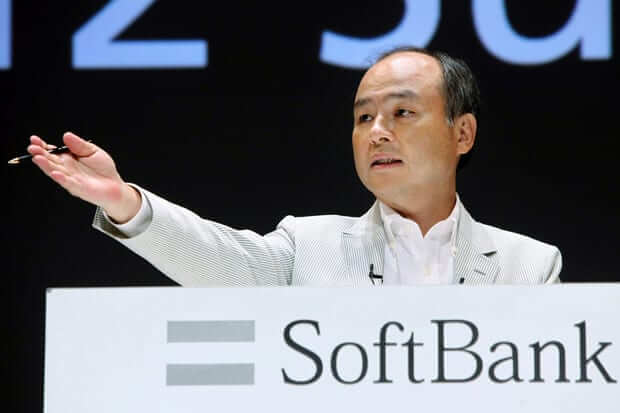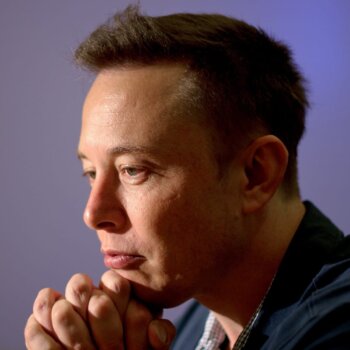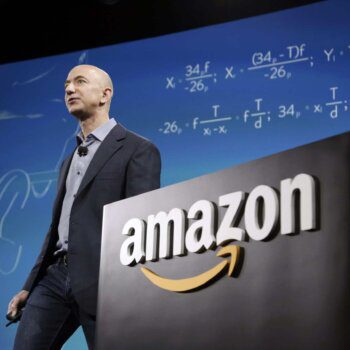Masayoshi Son says he first came up with this framework when he was 26 years old. And the 30 years of success is the proof of the validity of it. He continues to revise and improve on it. It is an lifetime pursue.
The formulation of his framework is base upon:
- Lanchester’s Law
- Sun Tzu’s Art of War
- Masayoshi Son’s original thinking
The framework has five pyramid levels, from top to bottom: Ideology, Vision, Strategy, Leader’s Competence, Tactics. Each level has then five attributes:
- Ideology: Road, Sky, Terrain, Leader, Systematisation
- Vision: Summit, Information, Strategy, Seven, Battle
- Strategy: One, Wave, Offensive, Defensive, Group
- Leader’s Competence: Knowledge, Trust, Benevolence, Courage, Strictness
- Tactics: Wind, Woods, Fire, Mountain, Sea
Son says all his decisions can based on those 25 attributes.
Ideology
Road: Use information revolution to make people happy
This is Softbank’s universal mission. Everyone in the company has heard of it and is familiar with it. It was mentioned several times also during the 30 years plan talk.
Sky: The information Revolution
The sky is for timing. There are unique things to be alive under this sky at this particular time. He gives few example of some of the unique things happening during this time:
- Information Big Bang
- Microprocessors
- Internet
No matter how great of a person you are, if you were born during the wrong timing, your opportunities are limited. The present people are extremely lucky to be living at this time and there is an unique and huge opportunity. Son reminds of the previous revolutions:
- Agricultural Revolution
- Industrial Revolution
- Information Revolution
The Information revolution is likely to be by far the biggest one. They got so lucky to be here during this timing. The opportunity is here and it should be taken advantage of.
Terrain: Terrain advantage: the epicenter of the Internet is Asia.
- In the past, the United States had 50% of the world’s internet,
- In 2015, Asia will have 50% of world’s internet users.
In the past, you had to be in the US and had to speak English, simply because the users were there. All big internet companies have historically come out of the US.
But the times have changed, the internet is shifting to Asia. Softbank Group has already been making a presence in Asia for a decade, notably by making investments in China such as Alibaba, Renren, etc…
With both this godsend opportunity from the Sky(Timing), and Terrain advantage, there is now no reason why Softbank should not take full advantage of the opportunity.
Leader: In order to succeed, you need to gather great leaders.
Of course the CEO must be a great leader, but he/she must also have at least 10 leaders below him/her. Nothing can be done alone, Softbank needs to accumulate great leaders. Softbank, by looking and picking great ventures to invest in Asia, is also gathering another great leader to join the Softbank family.
*Son actually uses the word General, but I’m translating it as Leader.
Systematisation: Systematisation is needed for continuous innovation
With willpower or luck, you may be able to get one win. But you cannot expect that to continue forever.
In order to keep winning and keep generating innovation, you need to create a system where it will make it happen again and again. Some examples of the systems Softbank has already implemented include:
- Accounting is divided by departments
- Introduction of new business models
Without the systematisation, it will impossible to execute at a scale.
Vision
Summit: The scenery you see when you have climbed to the top of the mountain
This is vision. The leader must be able to vision that scenery at the top of the mountain. He must be able to choose which mountain to climb. By choosing the correct mountain, you have already won 50% of life’s battle. You must have a great convinction that the mountain is correct be able to have a good idea of what the scenery on the top of that mountain looks like before you climb it. The leaders without a vision are the worst ones of all.
The vision does not come out in a day or two, you must think about it everyday. The vision for his 30 year plan took a whole 1 year of intensive thinking, and input from many many people.
Information: research
“He did research on 40 businesses, and in the end, the pile of papers he had accumulated were 1 meter in hight”
When son graduated from university and came back to Japan, he wanted to start an enterprise. But it took him 1.5 years before he did it. During this period, he was researching and accumulating information. He had came up with 40 businesses. He would create a very thoughtful plan for one business, create the business plan, financials, competitor’s analysis, plan for 10 years, expected revenue etc. And he would think that his was the best business in the world. 2-3 weeks later, he would come up with another business, a business better than the one before. He would then redo the research and create the new plan. He repeated this 40 times, each time with a business better than the one before. And the last one of his business plans turned out into Softbank. He emphasizes the importance of information accumulations (research).
Strategy: Strategy is basically the implementation for the vision.
After the reasearch you may have 40 choices, strategy is when you decide to go with one of them and never look back. Strategy takes a vision into reality.
Seven: The on who fights a battle with 50% winning chance is a fool. The one who fights a battle with 90% winning chance has made his move too late.
The best generals only fight battles they know they are going to win. Son is regarded as an agressive risk-taker but in reality he is very careful. He never risks more than 30% of the business. Even if the business is to fail, he can close it down and the core business can still go on. You must be sure that your math is right.
The leader must close down, make a retreat when that must be done. It is one of the hardest things to do. This is even harder for the next generation of leadership because they will be critisized to be not as good as the previous generation. Needs extreme courage to close a business down, you’ll be criticised by all points of view. When a general has lost 30% of his troops, he should immedialy call for retreat, any other decision is foolish. Not understanding this concept will bring Softbank into ruins.
Fight: The are things that can be seen during the fight
Words are cheap. Execution is hard. There are always competitors. Things change during the fight. No matter how good is the vision, strategy or research, it is all useless if you don’t come down and do the actual execution. He mentions that all companies fought their way into their current position: Toyota, Honda, Ford, Rockefeller, Billl Gates, Steve Jobs. Vision = Execution. Execution = Vision. Why one must fight? In order to make the vision come true.
Strategy
One: Must be by far the number one
Must own the specific market. You only make long-term profits if own the market and are far ahead of number two. If you are ahead by only a littile, it will probably me only a matter of time before you lose all profits. This is even more true in the technology space. Only if you are number one, you will be able to build a platform and define the de facto standard. Examples of platform that he mentions are: Microsoft’s Windows, Intel’s CPU, Google, Amazon, Yahoo.
The company must have a #1 culture. You must always strive to become number one. A culture that starts to become comfortable of not being number one is a very negative culture, it’s very bad. Son says he has always been number one since elementary school. He just can’t sleep if he is not number one.
Wave: Do not go against wave
Don’t go agains the wave. Get the direction right. Which OS should you choose? Of course the one who will become most used. Do not choose a niche.
An enterpreneurs who succeeds in a niche is not a successful entrepreneur. The successful entrepreneur succeeds in the mainstream market, that might as well be an othodox way. Softbank does not invest on niche markets, it invests on markets that will become big in the future. There is no meaning in winning a small market. If you choose to pursue a niche market because you are afraid to fight in the main market, then you are a loser.
Offensive
- Sales
- Technology
- M&A
- Development of new businesses
- etc. etc.
Must be good in multiple skills.
Defensive
- Cash Flow
- Cost reductions
- Investment Relations
- Close down a business
- Compliance
- Auditing
- Media Reputation
- etc. etc.
Many ventures today die because of financing. Softbank has a commitment to become zero debt financing in 4 years.
Group: Synergy 5000 companies.
Softbank Group will be compromised of 5000 companies. It will be a multi-brand, multi-business model. This may not be necessary if you want to survive for the next 30 years, but it is must have to survive for the next 300 years. Companies like Microsoft and Intel are struggling today as they have only a single brand.
Leader’s Competence
Knowledge
- Critical Thinking
- Global negotation
- Presentation skills
- Technology
- Finance
- Analytical Skills
- etc etc.
The leader must posses multiple skills, and have a good banance of skills. Must be very proficient in one skill so that he can make most out of the specialistz. The leader does not rely on specilists, he/she makes best use of them.
Trust: Mutual voluntary cooperation
Trust and be trusted. Partnerships. If you lose trust, others will not work with you.
Benevolence: For the happiness of people
Recall the vision. For the happiness of people.
Courage
Courage to fight against a big opponent. Courage to shut down a business.
Strictness
Strict with self. Strict with others when necessary. If you truly believe in the vision and the good for everyone, you must become a demon at certain times.
Tactics
Son skips the following are they are already well covered in Sun’s Art of War and other literature. however Sea is a original from Son.
Sea
The fight has ended only when everything has been engulfed and remains only complete silence and peace. As the sea.
____________________________________________________
About the Author
This article was written by Hanyon Wu.





























